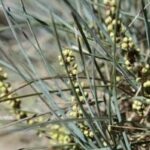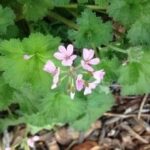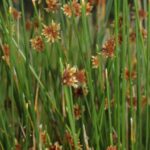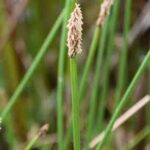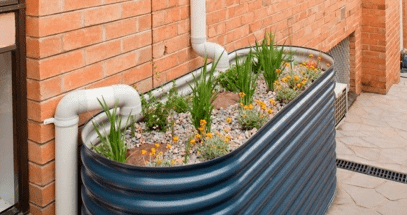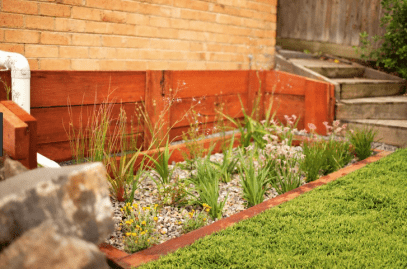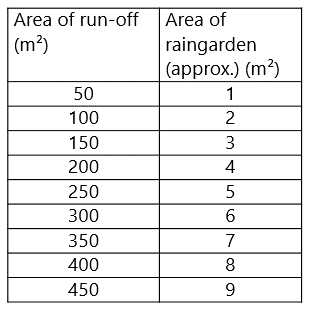What is a raingarden?
Raingardens help to slow and clean water, keeping pollutants out of the stormwater system and protecting our creeks and coasts.
A raingarden is like a regular garden with one major difference – it is designed to receive extra rain and stormwater from hard surfaces such as roof, paved area or road.
A simple network of plumbing surrounded by layers of soil, sand and gravel, allows water to move slowly through the raingarden.
Raingardens are planted with indigenous native plants – typically a combination of shrubs, grasses and spreading herbs like these:
Building a raingarden?
Watch our step-by-step video on how to build raingarden, including details on the equipment you’ll need.
Then check out our:
Tips for a successful raingarden
- Choose the best raingarden type for your property. Above-ground planter box are simple to construct. Click the images below for extra instructions on how to build an above-ground planter box raingarden and in-ground raingarden (from Melbourne Water).
- Think about location. Placing your above-ground raingarden directly below your downpipe saves additional plumbing. For a below-ground raingarden, near to your driveway or patio helps to collect extra run-off.
- Ensure your above-ground or lined below-ground raingarden is at least 30cm from the house.
- For un-lined or partially lined below-ground raingardens, at least 3 metres from the footings is recommended, but this may vary depending on soil type (refer to Minister’s Specifications for exact requirements).
- If your raingarden is too small, it’ll overflow often. If it’s too big, it’ll dry out often. Size your raingarden based on the size of your roof (or other catchment area) as per our guide
- To scale up your raingarden, you’ll need additional plumbing. Add another slotted pipe and overflow pipe for every 4 metres of raingarden width
- Add a very small amount of clay (up to 3%) and organic matter (up to 5%) to the top layer of soil to retain moisture between rainfall events
- Plant in zones. Plants in the ‘inlet’ zone (where water enters your raingarden) will need to be structurally hardy to manage fast flows of water. Our planting guide suggests different plants for different zones.
- For your raingarden to adequately filter water, at least 50% of your raingarden’s plants must be effective at nitrogen removal. Use our planting guide for ideas.
- Manage weeds with regular weeding and by planting densely. Using gravel is not recommended as it does not allow plants to spread and causes heat stress to plants. Equally, mulch is not recommended as it will wash away in storm events and can clog your system.
- Keep an eye on the amount of water in your raingarden by looking down the inspection pipe. If the level is low, you may need to add extra water to your garden to keep the plants happy.
Other resources
Adoption Guidelines for Stormwater Biofiltration Systems – the Cooperative Research Centre for Water Sensitive Cities, 2015.






